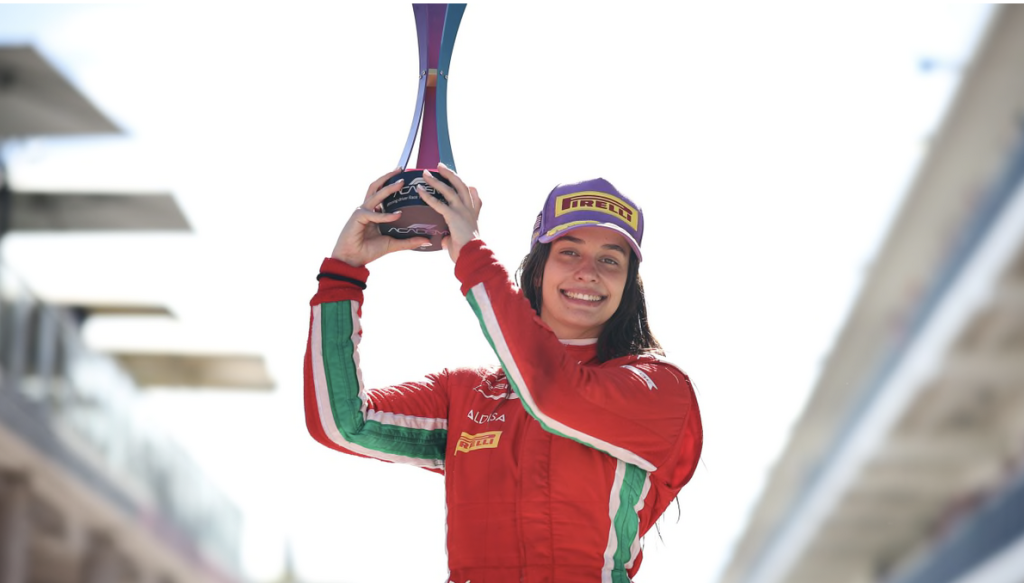By Skye Slatcher
Over the last few years, the Formula Series have seen rapid growth in their fanbases, especially among women, with a 47% from 2021 to 2022. However, since Formula One’s conception in 1950, only two women have ever competed. A woman has not participated in an F1 Grand Prix since 1976 when Lella Lombardi raced in Austria. Why not? Why are women still not entering those highest tiers of racing at anywhere near the rate men are?
Attitudes towards women in racing generally replicate the historic status quo of Britain. It is sexist, it is a patriarchy. A lot of people argue that there is a performance gap and that women drivers just aren’t as good as men. Danica Patrick, for example, despite being an IndyCar race winner, described the sport as inherently ‘masculine’ and said that ‘the mindset that it takes to be really good is something that’s not normal in a feminine mind’. The reality is that women aren’t given the opportunities, track time, and sponsorships needed to succeed. Instead, they receive damaging stereotypes. This is true not just of the drivers, but of mechanics and managerial roles too. At Mercedes, just 6.1% of the Grand Prix workforce are women, while AlphaTauri said in 2021 that they have no women on their race team. Teams at the forefront of the sport failing to promote gender equality is incredibly disappointing.
The first-ever F1 academy season has just ended, crowning Marta García as its inaugural champion. The series is a new women-only championship, aimed at helping boost the number of women progressing to higher levels in the sport. F1 Academy is intertwined with the infrastructure of Formula One, meaning it has much greater visibility. Its races will now be shown on Sky with the F1 weekend coverage, allowing a far wider audience to be reached. This connection will grow further in the 2024 season when all 10 F1 teams will have a driver running their liveries. We have already seen this coming to fruition with the recent announcement of Bianca Bustamante as McLaren’s first-ever woman development driver. These developments could provide real scope for meaningful change. As more women move up, young girls will be inspired to follow in their footsteps. The idea that ‘you cannot be what you cannot see’ should not be understated.
F1 Academy does not, however, tackle the issues faced early in the pathway to Formula racing. Karting is a costly sport and finding sponsors can be difficult. Many rely on their parents. For those who do not have a parental safety net, however, the funding challenge is even more pronounced for girls. Stories of women in sport often feature repeated knocking on doors, met by ‘no’s. To see the necessary fundamental shift, something needs to be different from the grassroots. It is not enough to only be looking at the top ranks.
Change is beginning to take place. It helps that there is support coming from people in high places. The fact that there are drivers like Lewis Hamilton and team principals like Toto Wolff supporting change, and icons like Susie Wolff spearheading a revolution means we might soon see the tidal shift we are looking for. We might finally be able to drown out the voices of those who don’t think women can succeed.
Hopefully, soon, we will be able to get rid of the stereotype that women are poor drivers, that we don’t know how cars work, or that we can only drive ‘entry-level’ ones. Women need to be encouraged to climb to higher ranks of motorsport teams, in driving, technology, and management. Given that women are to thank for some fundamental advancements like the GPS or windscreen wipers, imagine what change might be seen if there were a few more of us around.
Photo from Formula One




